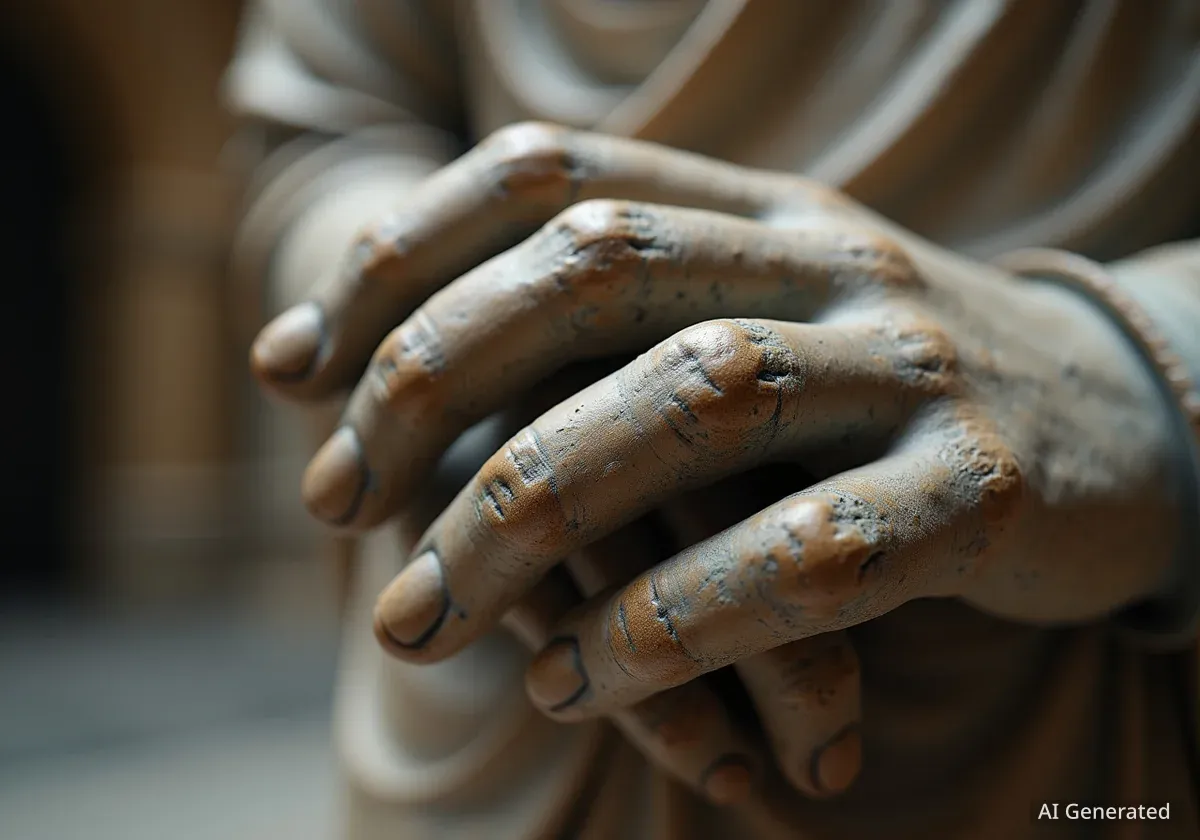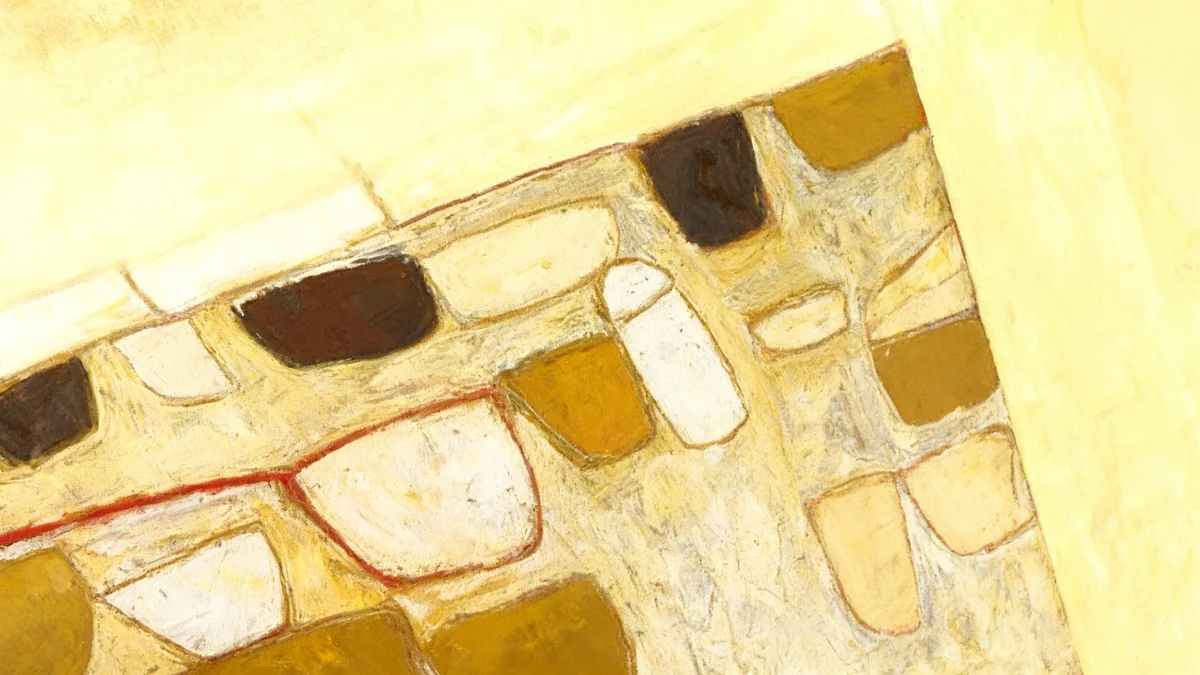Philadelphia's art scene features significant exhibitions this fall, showcasing both historical and contemporary works. The Rodin Museum presents "Rodin's Hands," an exploration of the sculptor's detailed studies of human hands. Concurrently, the Pennsylvania Academy of the Fine Arts (PAFA) opens "Pictures of Belonging," an exhibition highlighting the experiences of three Japanese American women artists during the pre- and post-World War II eras.
Key Takeaways
- The Rodin Museum's "Rodin's Hands" exhibit features 15 bronzes and plasters, many unique to Philadelphia.
- The exhibit explores Rodin's focus on hands as independent artistic expressions.
- PAFA's "Pictures of Belonging" showcases 70 paintings and drawings by Miki Hayakawa, Hisako Hibi, and Miné Okubo.
- The PAFA exhibition highlights the artists' experiences, including their incarceration during World War II.
- Both exhibitions offer new perspectives on American art history.
Rodin's Hands Exhibition at the Rodin Museum
The Rodin Museum, located on the Benjamin Franklin Parkway, is hosting "Rodin's Hands." This exhibition focuses on Auguste Rodin's study of hands as distinct artistic subjects. Visitors can see casts and models of hands, separate from larger sculptures like "The Thinker." The exhibit runs through January 4.
French critic Gustave Kahn once described Rodin as "the sculptor of hands — furious, clenched, rearing damned hands." This exhibit brings Kahn's observation to life. Rodin first displayed hands as independent artworks in 1900. Some critics at the time found these standalone pieces unsettling due to their 'severed' appearance.
Exhibition Details
- Location: Rodin Museum, 2151 Benjamin Franklin Parkway, Philadelphia
- Duration: Through January 4
- Admission: Pay what you wish
Exploring Emotional Depth Through Hands
The exhibition features hands conveying various emotions and narratives. One notable piece is a hand reaching up from a tomb-like structure. This evokes different reactions, from lighthearted comparisons to the Addams Family character 'Thing' to more intense, suspenseful imagery.
Other works show hands clasped in secrecy, fingers touching like architectural elements, or representing divine and demonic forces. There are also examples of hands that are smooth and tender, possibly depicting Rodin and his companion Rose Beuret, alongside hands that are clenched in anger. A poignant self-portrait of the artist, including a cast of a torso, is also part of the display. After viewing these works, audiences may gain a new appreciation for the detailed handwork in Rodin's larger sculptures.
"Rodin's vision of creation shows the hand of God appearing not from heaven but from the earth, cradling a rock from which a man and woman emerge," according to exhibition materials.
This portrayal of the hand of God, with its extended index finger, also appears on two figures in Rodin’s "Burghers of Calais." This sculpture is located in the museum garden, offering visitors an opportunity for a 'hand scavenger hunt' after seeing the indoor exhibition. The exhibit includes 15 bronzes and plasters. Many of these pieces are rare or unique to the Philadelphia collection, providing a special viewing experience for art enthusiasts.
Pictures of Belonging at PAFA
The Pennsylvania Academy of the Fine Arts (PAFA) opens "Pictures of Belonging" on October 9. This exhibition presents the works of three Japanese American women artists: Miki Hayakawa, Hisako Hibi, and Miné Okubo. Their art and life stories provide a broader view of the American experience during the pre- and post-World War II eras in California.
This marks the first time their works are shown together in this comprehensive manner. The exhibition includes 70 paintings and drawings, along with four sketchbooks. The collection spans eight decades of their artistic careers. PAFA is the third of four stops for this traveling exhibition, which will conclude at the Japanese American National Museum in Los Angeles. Previous stops included Utah and California, where the artists exhibited before the war.
Historical Context: Japanese American Incarceration
During World War II, approximately 120,000 people of Japanese descent were forcibly moved to incarceration camps in the U.S. This occurred after an executive order by President Franklin D. Roosevelt. Hisako Hibi and Miné Okubo were among those interned at the Topaz Relocation Center in Utah between 1942 and 1944. Their experiences in these camps significantly influenced their art.
Art Reflecting Experience and Change
Some paintings in the exhibition were created inside the incarceration camps. Examples include Okubo's "Wind and Dust" (1943) and Hibi’s "Eastern Sky, 7:50 A.M." (1945) and "Western Sky, Topaz, Utah" (1945). These works contrast sharply with their pre-war art. Before the war, Hayakawa painted cubist portraits, Okubo created distinctive portraits of everyday life, and Hibi focused on cubist pastoral scenes.
Lea Stephenson, PAFA’s coordinating curator for the exhibition, emphasized the importance of this collection. "It’s an exhibition that makes us rethink what is American art, who is considered an American artist, especially in these historical moments," Stephenson stated. She highlighted that these three artists have not received the attention they deserve. This exhibition helps address that oversight.
Post-War Artistic Evolution
After the war, the artists' styles evolved. Their post-war images became more abstract and influenced by graphic arts. Many moved to New York City and worked in different mediums. Their art from this period shows geometric forms and bright colors, reflecting contemporary art movements. Miné Okubo is also known for her graphic memoir, "Citizen 13660," which documents her time in the relocation camps.
Stephenson noted that their work reflects broader trends in American art, including abstract expressionism and gestural brushstrokes, particularly the California style. The exhibition is structured chronologically, showing the artists' progression. The first section focuses on their pre-war styles, often centered on communities and relationships. The middle section displays art created during their incarceration. The final section highlights their post-war art, created after their move to New York City.
The period of Japanese internment is a complex part of U.S. history. Stephenson mentioned it is a period "the U.S. doesn’t like to acknowledge." This exhibition serves as a significant cultural contribution, shedding light on this time through the eyes of those who experienced it. "Pictures of Belonging" will be on view at PAFA from October 9 to January 4.
Exhibition Details
- Location: Pennsylvania Academy of the Fine Arts (PAFA)
- Duration: October 9 - January 4
- Artists: Miki Hayakawa, Hisako Hibi, Miné Okubo
- Number of Works: 70 paintings and drawings, 4 sketchbooks




